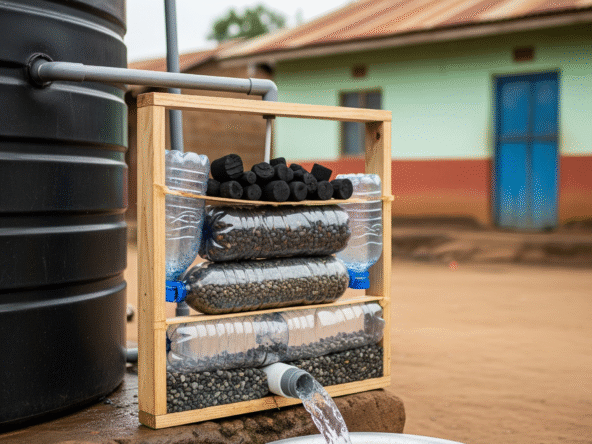In many Kenyan households, managing water manually—waiting for supply, checking tank levels, or switching pumps on and off can be both time-consuming and wasteful. With erratic supply patterns and rising water costs, automating your water tank refill using float switches is one of the smartest upgrades you can make.
Whether you’re working with a gravity-fed tank, borehole pump, or multi-tank system, float switches help ensure efficiency, prevent overflow, protect your pump, and reduce stress.
1. What Is a Float Switch?
A float switch is a water level sensor that rises or falls with the water in a tank. Depending on the switch position, it can:
- Trigger a pump to turn on/off
- Open or close a valve for refilling
- Activate alarms when water is low or overflowing
Float switches can be installed in plastic water tanks, IBC tanks, underground tanks, or steel overhead reservoirs all common in Kenyan homes.
If you’re still choosing your tank, start with Top Water Tank Brands in Kenya to compare materials, sizes, and durability.
2. Benefits of Float Switches for Home Water Systems
| Advantage | Why It Matters |
|---|---|
| Automatic refilling | Saves you from manually turning pumps on/off |
| Prevents overflow | No water wastage or flooded compounds |
| Protects your water pump | Avoids dry runs that damage equipment |
| Reduces maintenance stress | Set-and-forget operation |
| Increases system lifespan | Especially for pressure or solar pumps |
For homes using multiple storage tanks, float switches help manage balance and overflow—see Multi-Tank Linking Systems in Kenya for setup ideas.
3. Common Float Switch Use Cases in Kenya
| Setup Type | Tank Type | Function |
|---|---|---|
| Borehole or well pump | Underground or steel tank | Starts/stops pump |
| Overhead storage refill | 2000–10,000L plastic tanks | Opens supply when low |
| Gravity-fed irrigation | 1000–3000L tanks | Keeps level consistent |
| Rainwater catchment | IBC or rooftop tanks | Stops overflow during rains |
In areas like Syokimau, Ruiru, or Kisumu, float switches are essential due to inconsistent pressure and supply schedules.
4. Types of Float Switches You Can Install
a) Mechanical Float Switches
- No power needed
- Acts like a ballcock valve
- Ideal for gravity-fed systems and rainwater tanks
b) Electronic Float Switches
- Requires electricity
- Controls pumps via relay
- Best for boreholes and pressure tank systems
c) Submersible Sensor Switches
- Sealed for wet environments
- Higher accuracy and reliability
- Suitable for underground or partially buried tanks
Pairing these with water-saving plumbing setups maximizes efficiency—see Water-Saving Fixtures and Plumbing Tips.
5. How to Install a Float Switch (DIY or With a Fundi)
Step 1: Choose your tank type and float
- Plastic tanks: Side or top-entry switches
- Underground tanks: Use submersible sensors
Step 2: Mark your ON and OFF water levels
- Top sensor = switch OFF at full tank
- Bottom sensor = switch ON when low
Step 3: Mount and secure the switch
- Use brackets, pipe clamps, or hanging cords
- Ensure free movement without hitting tank walls
Step 4: Connect to a relay and pump (if electric)
- Use weatherproof wiring and surge protectors
- Test manually before full automation
For tank elevation guidance, refer to DIY Tank Stand Construction.
6. Mistakes to Avoid
- Placing switches where movement is blocked by tank walls
- Skipping surge protection in electronic float systems
- Ignoring tank sealing—entry points must be watertight
- Failing to test ON/OFF positions before wiring permanently
Cleaning and inspecting your tank regularly is still essential. Follow the steps in How to Clean and Maintain Water Tanks.
Float switches bring automated convenience, protection, and peace of mind to every household managing water tanks in Kenya. Whether you’re automating a borehole, topping off a 5000L gravity tank, or managing overflow in IBC tanks, this affordable upgrade ensures your water storage is smart, safe, and stress-free.
Explore More Guides on Home Water Systems:


